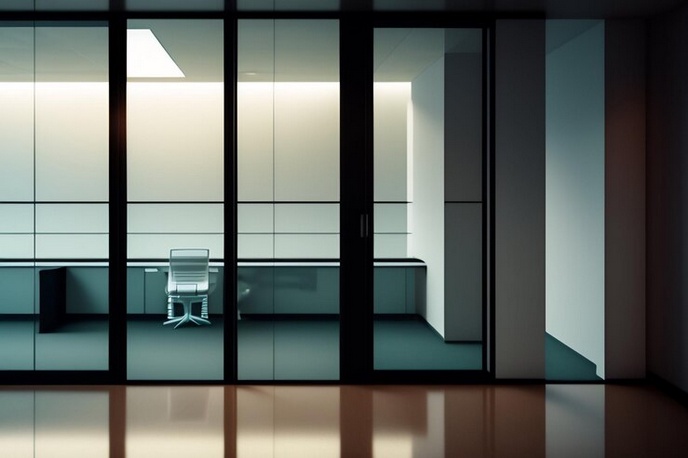In the realm of contemporary office design, one of the most impactful elements is the use of glass doors. They not only serve as functional barriers within a workspace but also contribute significantly to the overall aesthetics and ambiance. Glass doors have become a defining feature in modern office design due to their ability to foster an open, airy environment while simultaneously providing privacy and delineation. This article aims to explore various innovative office glass door design ideas, highlighting their advantages, styles, and considerations for creating a modern, inviting workspace.
Advantages of Glass Doors in Office Design
The integration of glass doors in office spaces brings forth a multitude of advantages. Firstly, their transparent nature allows natural light to permeate the workspace, creating a brighter, more inviting environment. This illumination not only reduces the reliance on artificial lighting but also contributes to an uplifting atmosphere, thereby positively impacting employee well-being and productivity.
Moreover, the use of glass doors fosters an open and collaborative atmosphere. By allowing visual connectivity across different sections of the office, they encourage interaction and communication among team members. This aspect of transparency promotes a sense of inclusivity and teamwork within the workspace, which is crucial for fostering a modern, dynamic work environment.
Privacy is another key advantage offered by glass doors. While they maintain a sense of openness, various types of frosted or tinted glass provide the necessary level of privacy for meeting rooms, executive offices, or areas requiring confidentiality. This balance between transparency and seclusion is vital in cultivating a workspace that meets both the collaborative and individual needs of employees.
Styles and Designs of Glass Doors
When considering office glass door designs, several styles and configurations cater to different functional and aesthetic requirements.
Frameless glass doors, for instance, offer a sleek, minimalist look, allowing for uninterrupted views and a sense of spaciousness. The absence of visible framing provides a clean and sophisticated appearance that aligns well with contemporary office aesthetics.
Sliding glass doors are another popular choice, especially for smaller spaces. They save room by not requiring extra space for the door's swing, making them ideal for meeting rooms, private offices, or collaborative areas where space optimization is essential.
Frosted or etched glass doors offer a balance between transparency and privacy. They come in various designs, patterns, or opacity levels, allowing natural light to filter through while obscuring direct visibility, making them perfect for spaces requiring confidentiality without compromising on luminosity.
Furthermore, bi-fold glass doors, with their folding panels, provide versatility, enabling the transformation of a larger open space into smaller sections as needed. This design is excellent for areas that require flexibility in usage throughout the workday.
Considerations for Implementing Glass Door Designs
While integrating glass doors into an office space is advantageous, there are key considerations that need to be addressed for a successful implementation.
Acoustic control is a significant concern in open office environments. To mitigate sound transmission, using laminated or double-glazed glass can help reduce noise levels between different sections without compromising the visual openness of the space.
Privacy remains a critical aspect in a workspace. Assessing the need for complete transparency versus the need for privacy in specific areas will dictate the type of glass and its opacity level.
Maintenance and safety are also essential considerations. Glass doors need to be maintained for cleanliness and safety. Employing easy-to-clean glass solutions and ensuring safety measures, such as tempered or safety laminated glass, is crucial in a busy office environment.
Additionally, considering the surrounding design elements, such as the type of hardware, frames, and their compatibility with the overall office aesthetic, is important for a cohesive and visually appealing workspace.
Conclusion
In the contemporary world of office design, the use of glass doors is not merely functional but also serves as a symbol of modernity and sophistication. Their ability to combine transparency, light, privacy, and aesthetic appeal makes them a crucial element in creating an inviting and efficient workspace. By understanding the advantages, diverse styles, and essential considerations for their implementation, one can leverage glass doors to transform a traditional office setting into a modern, open, and dynamic workspace that promotes collaboration, productivity, and employee satisfaction. Therefore, integrating innovative glass door designs can play a pivotal role in shaping a workspace that aligns with the evolving needs and preferences of the modern workforce.


No comments yet